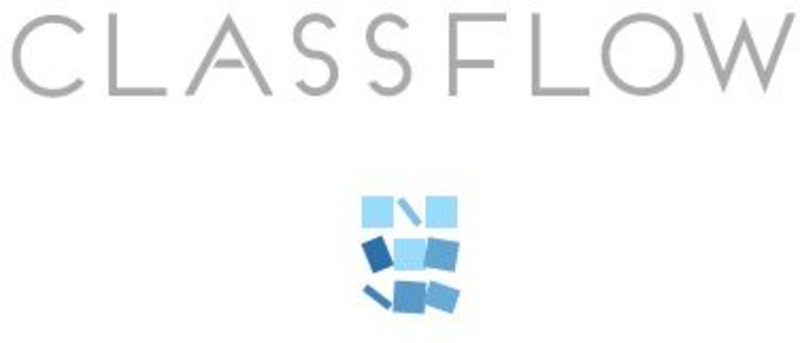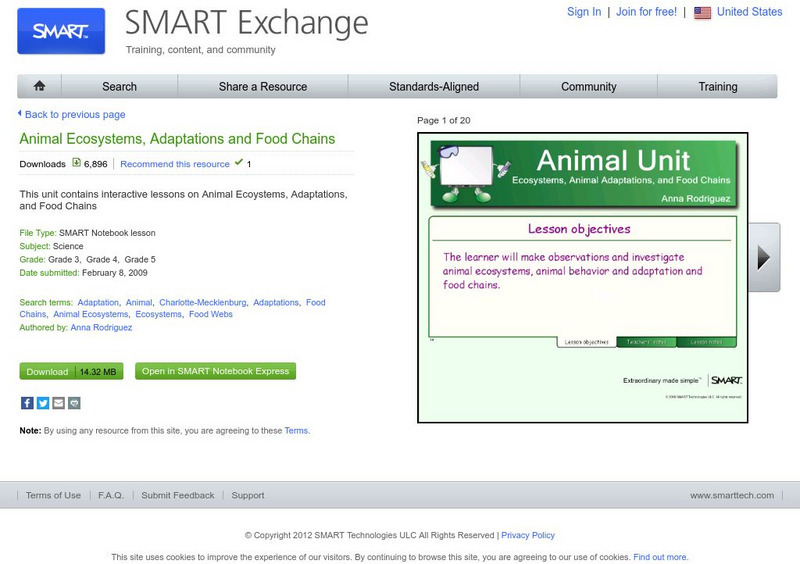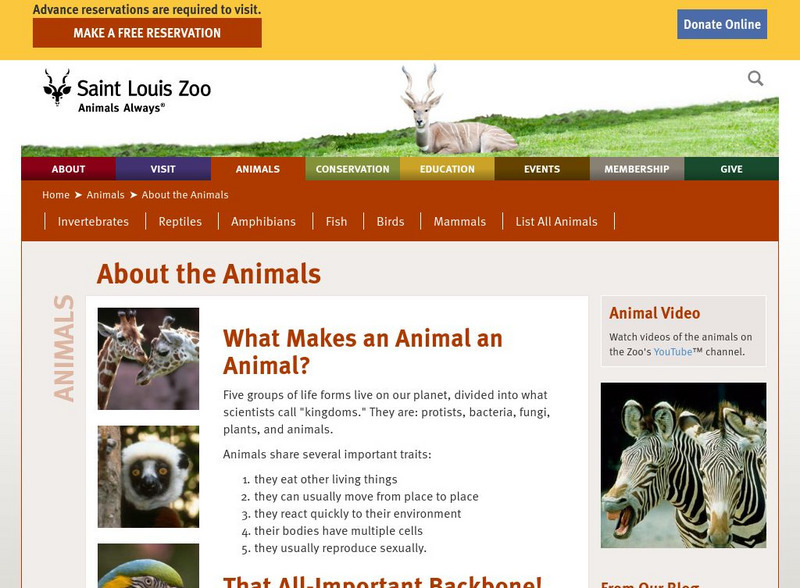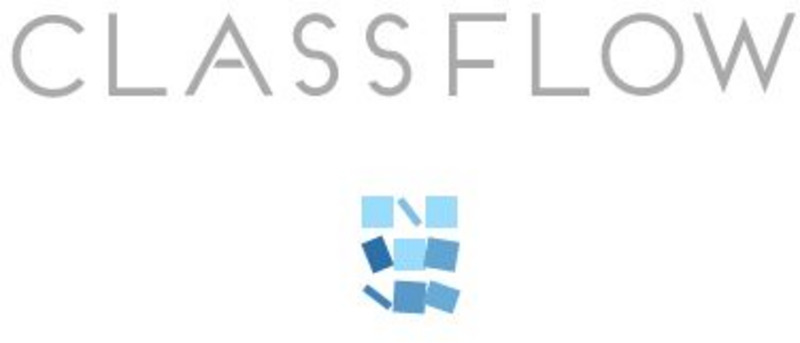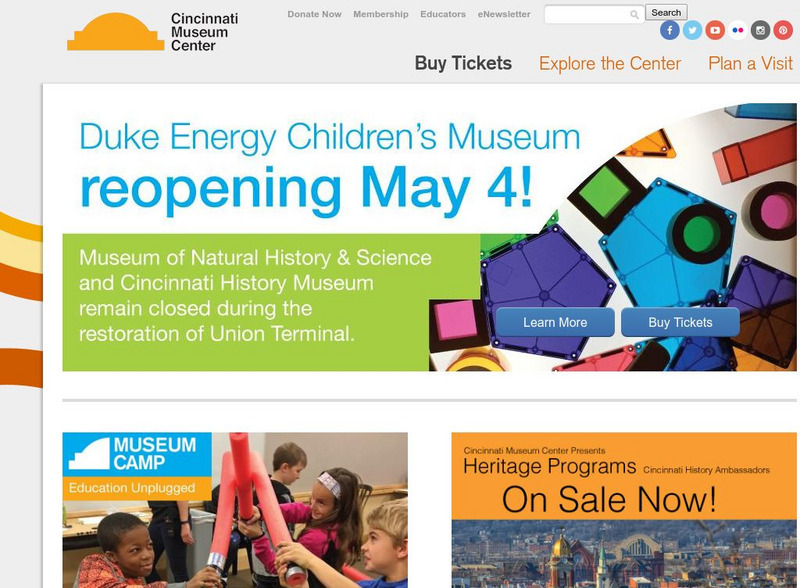Hi, what do you want to do?
Curated OER
The Chordates
Students study the characteristics of organisms that are a part of the phylum Chordata. In this organisms lesson students identify mammals that are native to Saskatchewan.
Curated OER
Oddball Out: Animals
For this problem solving worksheet, students analyze a row of pictures
of various animals to determine which creature is different from
the others pictured.
Curated OER
The Reptiles
For this reptiles worksheet, students match 9 terms from a word list to the statement that it completes. Then students write 1 short paragraph about how they feel about reptiles.
ArtsNow
Arts Now Learning: Dance With Vertebrates and Invertebrates [Pdf]
In this lesson, 5th graders use movement and dance composition to aid in the understanding of vertebrates and invertebrates.
BiologyWise
Biology Wise: Vertebrates and Invertebrates
The characteristics of vertebrates and invertebrates are described here. Includes a list of examples for each group and a chart highlighting their differences.
Alabama Learning Exchange
Alex: Vertebrates or Invertebrates
During this instructional activity, students navigate the Internet to discover facts about vertebrates and invertebrates. They use the facts they learn to participate in several class activities.
ClassFlow
Class Flow: Vertebrates and Invertebrates
[Free Registration/Login Required] Using this lesson the students will review the 2 groups of animals - vertebrates and invertebrates. They will be actively involved in classifying animals. An Activote assessment is also included.
Other
Denver Museum of Nature and Science: Follow a Fossil
Students examine paleontology, the study of ancient life on Earth. Some topics explored are vertebrates, invertebrates, and plants.
Globio
Glossopedia: Animals
The animal kingdom and its classification are explained and broken down into vertebrates and invertebrates in this resource. "Best-of" the animal kingdom list given - fastest, smallest, largest, strongest and more.
SMART Technologies
Smart: Animal Ecosystems, Adaptations and Food Chains
This unit contains interactive lessons on animal ecosystems, animal classification, adaptations, and food chains.
Georgia Department of Education
Ga Virtual Learning: Earth and Life History
In this amazingly comprehensive tutorial you will learn about the geological and environmental changes that occurred during the geologic time scale.
Saint Louis Zoo
Saint Louis Zoo: About the Animals: What Makes an Animal an Animal?
Short introduction to animals explains the important traits that all animals share and the differences between vertebrates and invertebrates.
Science Education Resource Center at Carleton College
Serc: Mn Step: Water Retention No Problem With the Key Investigation
Students go outside to a nearby pond or wet area, and collect vertebrates and invertebrates. These are identified using a classification key. Information is recorded using a digital camera and a science notebook. Students later prepare a...
University of Florida
Florida Museum of Natural History: Homepage
This site from the Florida Museum of Natural History gives the current events, information about the museum, exhibits and public programs, research and collections, links, etc. to the Florida Museum of Natural History.
CK-12 Foundation
Ck 12: Third Grade Science: Life Sci: Animal Characteristics and Classification
[Free Registration/Login may be required to access all resource tools.] Presents an overview of the major animals groups (mammals, birds, reptiles, amphibians, fish, arthropods, vertebrates, invertebrates, those having live births and...
Other
Science4 Us: Animals
In online and offline activities, students broaden their understanding of animals by learning to identify and classify animals into six categories: mammals, birds, fish, amphibians, reptiles, and invertebrates.
ClassFlow
Class Flow: Moving and Growing
[Free Registration/Login Required] In this unit children learn about how the skeleton is related to movement and support in humans and what happens to the skeleton and muscles as they move. They also compare human bones and skeletons...
Yale University
Yale Peabody Museum
This home page describes what the museum has to offer. Links to the exhibits and more information is provided at the bottom of the site.
Canadian Museum of Nature
Canadian Museum of Nature: Natural History Notebooks
A great reference source for a variety of vertebrate and invertebrate animals. This exhaustive resource also has some prehistoric extinct animals that students can compare to their living counterparts to increase their understanding of...
TED Talks
Ted: Ted Ed: How Do Animals Experience Pain?
How do the animals all around us experience pain? Robyn J. Crook examines pain in both vertebrate and invertebrate animals. [5:06]
PBS
Idaho Ptv: Dialogue for Kids: Zoology
A collection of facts and links on the field of zoology. The facts cover what zoology is, the diversity of vertebrate and invertebrate animals studied in zoology, scientific names for animals, where zoologists work, zoos around the...
ClassFlow
Class Flow: Animal Classification
[Free Registration/Login Required] Students will classify organisms into groups and relate how they determined the groups with how and why scientists use classification. They will also demonstrate how animals are sorted into groups...
Other
Cincinnati Museum Center
This site describes the Museum of Natural History and Science in detail and provides links to other programs and exhibits offered.
Alabama Learning Exchange
Alex: Classification
This lesson will explain the reasons that society groups and classifies. The lesson has a hands-on component that helps students connect everyday grouping with the way that scientists group and classify all living organisms.








![Arts Now Learning: Dance With Vertebrates and Invertebrates [Pdf] Lesson Plan Arts Now Learning: Dance With Vertebrates and Invertebrates [Pdf] Lesson Plan](https://static.lp.lexp.cloud/images/attachment_defaults/resource/large/FPO-knovation.png)

